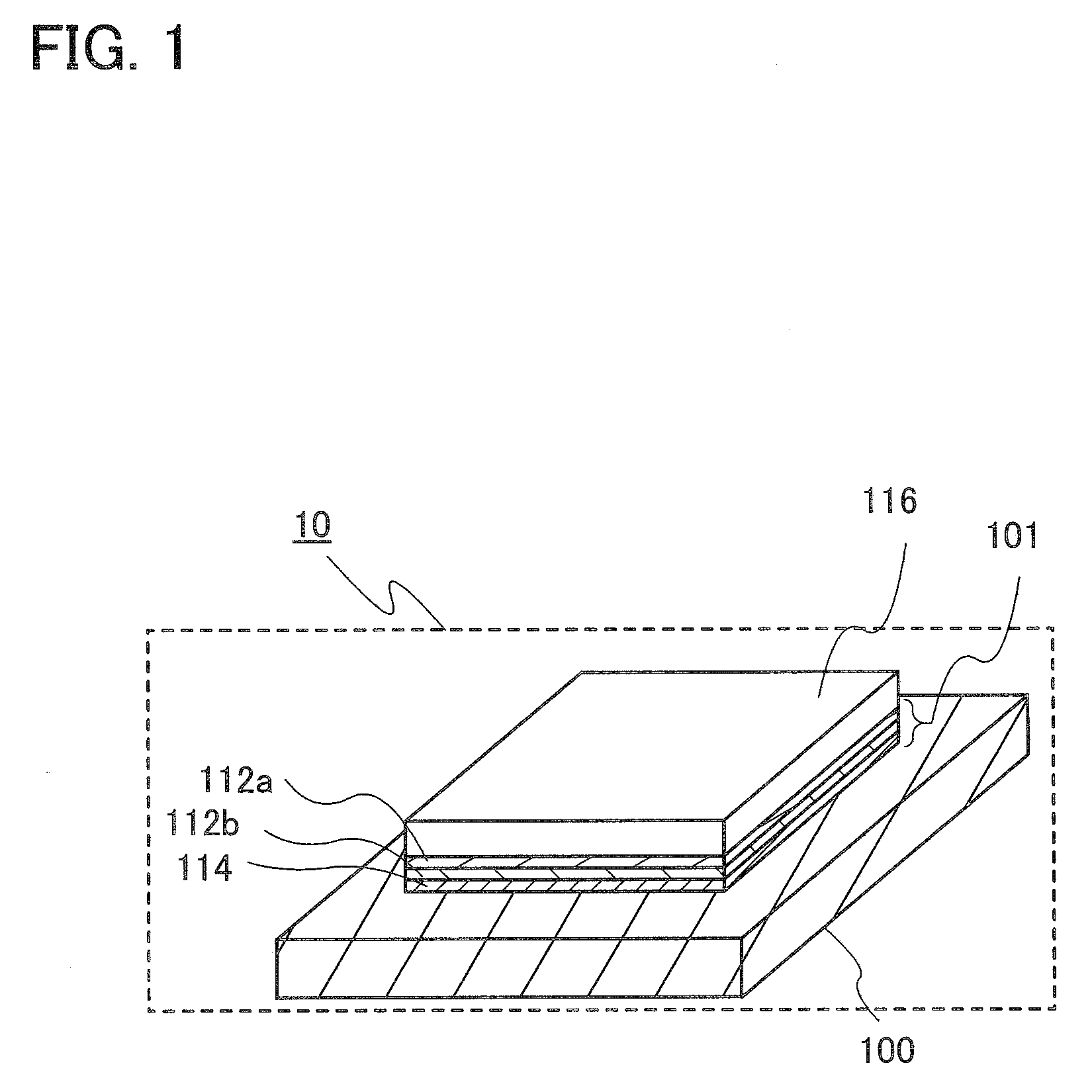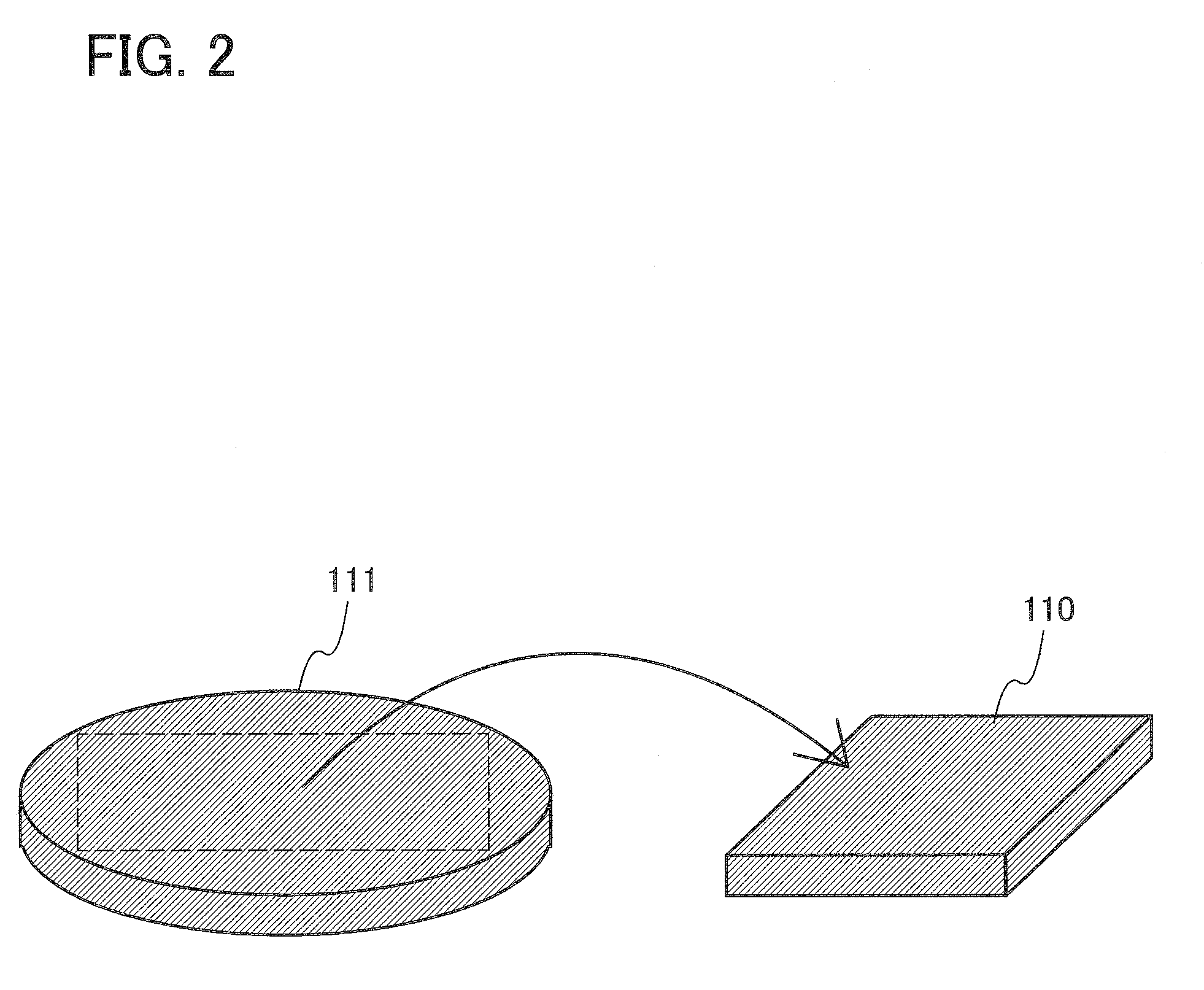Method for manufacturing semiconductor substrate, semiconductor device and electronic device
a semiconductor substrate and semiconductor technology, applied in semiconductor devices, electrical devices, transistors, etc., can solve the problems of low heat resistance of glass substrates, temperature limitation to 700°, and glass substrates cannot be heated at a temperature exceeding 700°, so as to improve the planarity, improve the quality of single crystal semiconductor layers, and improve the effect of planarity
- Summary
- Abstract
- Description
- Claims
- Application Information
AI Technical Summary
Benefits of technology
Problems solved by technology
Method used
Image
Examples
embodiment mode 1
[0077]FIG. 1 is a perspective view of an example of a semiconductor substrate structure. In a semiconductor substrate 10, a single crystal semiconductor layer 116 is attached to a supporting substrate 100 with a buffer layer 101 interposed therebetween. The semiconductor substrate 10 is a substrate having a so-called SOI structure and has a single crystal semiconductor layer over an insulating layer.
[0078]The buffer layer 101 has a single layer structure or a multilayer structure in which two or more films are stacked. In this embodiment mode, the buffer layer 101 has a three-layer structure in which a bonding layer 114, an insulating film 112b and an insulating film 112 are stacked over the supporting substrate 100. In addition, the insulating film 112a is an insulating film serving as a barrier layer. The barrier layer can prevent an impurity (typically, sodium) of an alkali metal or an alkaline earth metal which may reduce reliability of a semiconductor device from entering the s...
embodiment mode 2
[0229]A single crystal semiconductor substrate 117 from which a single crystal semiconductor layer 115 has been separated can be reused as the single crystal semiconductor substrate 110 by being subjected to reprocessing treatment. In this embodiment mode, the reprocessing treatment is described.
[0230]As shown in FIG. 4A, a portion which is not attached to the supporting substrate 100 is left remaining at the periphery of the single crystal semiconductor substrate 117. Portions of the insulating film 112b, the insulating film 112a, and the bonding layer 114 which are not attached to the supporting substrate 100 remain in this portion.
[0231]First, etching treatment is performed to remove the insulating film 112a, the insulating film 112a, and the bonding layer 114. For example, when these films are formed from silicon oxide, silicon oxynitride, or silicon nitride oxide, the insulating film 112b, the insulating film 112a, and the bonding layer 114 can be removed by wet etching treatme...
embodiment mode 3
[0236]As an example of a manufacturing method of a semiconductor device using the semiconductor substrate 10, a manufacturing method of transistors will be described in Embodiment Mode 3, with reference to cross-sectional views of FIGS. 16A to 16D, FIGS. 17A to 17C, and FIGS. 18A and 18B. By combining a plurality of transistors, a variety of types of semiconductor devices are manufactured. In this embodiment mode, an n-channel transistor and a p-channel transistor can be manufactured at the same time.
[0237]As illustrated in FIG. 16A, a single crystal semiconductor layer over the supporting substrate 100 is processed (patterned) into a desired shape by etching, so that a semiconductor film 603 and a semiconductor film 604 are formed. A p-channel transistor is formed using the semiconductor film 603, and an n-channel transistor is formed using the semiconductor film 604.
[0238]To control threshold voltages, a p-type impurity element such as boron, aluminum, or gallium or an n-type impu...
PUM
 Login to View More
Login to View More Abstract
Description
Claims
Application Information
 Login to View More
Login to View More - R&D
- Intellectual Property
- Life Sciences
- Materials
- Tech Scout
- Unparalleled Data Quality
- Higher Quality Content
- 60% Fewer Hallucinations
Browse by: Latest US Patents, China's latest patents, Technical Efficacy Thesaurus, Application Domain, Technology Topic, Popular Technical Reports.
© 2025 PatSnap. All rights reserved.Legal|Privacy policy|Modern Slavery Act Transparency Statement|Sitemap|About US| Contact US: help@patsnap.com



